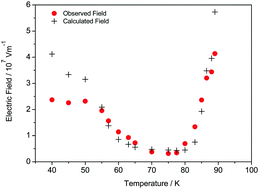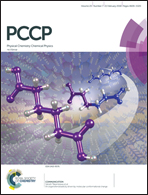Non-linear and non-local behaviour in spontaneously electrical solids
Abstract
Using reflection–absorption infrared spectroscopy (RAIRS), we show that solids displaying spontaneous dipole orientation possess quite general non-local and non-linear characteristics, exemplified through their internal electric fields. The most graphic illustration of this, uncovered originally through electron beam studies, may be found in films of cis-methyl formate (cis-MF), for which data demonstrated the counter-intuitive property that the degree of dipole order in the film does not monotonically decrease as the temperature of deposition rises, but rather increases sharply above ∼77 K. Here we show how RAIRS provides independent evidence to support this conclusion. These new data confirm (i) that the behaviour of spontelectrics is governed by an expression for the degree of dipole orientation, which is continuous in temperature, but with a discontinuity in the derivative, and (ii) that the temperature of deposition associated with this discontinuity matches the temperature above which dipole order switches from the expected reduction with temperature to an increase with temperature.

- This article is part of the themed collection: 2018 PCCP HOT Articles


 Please wait while we load your content...
Please wait while we load your content...